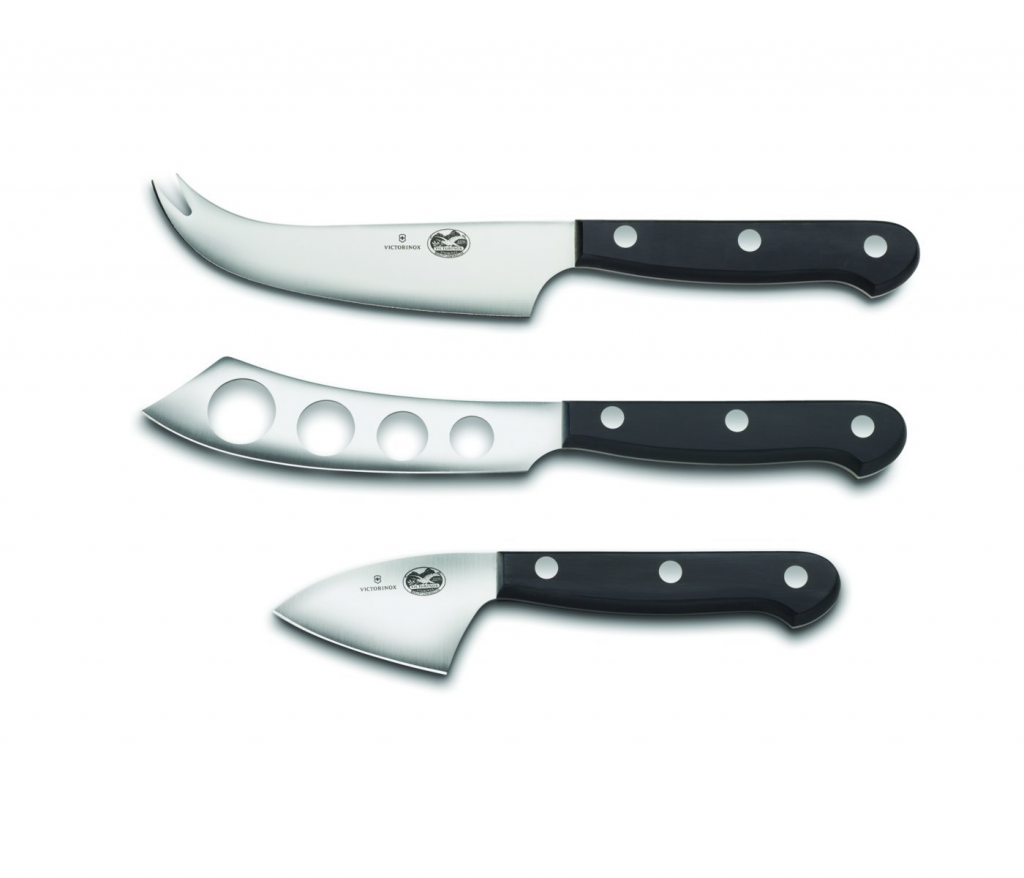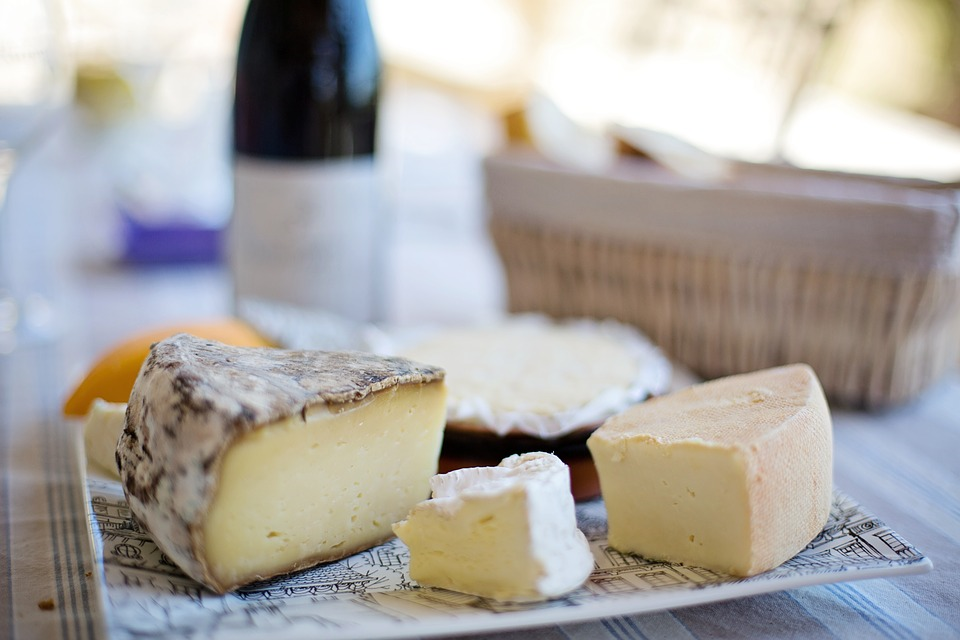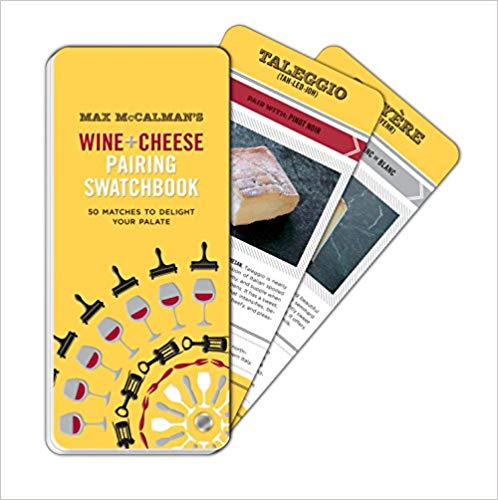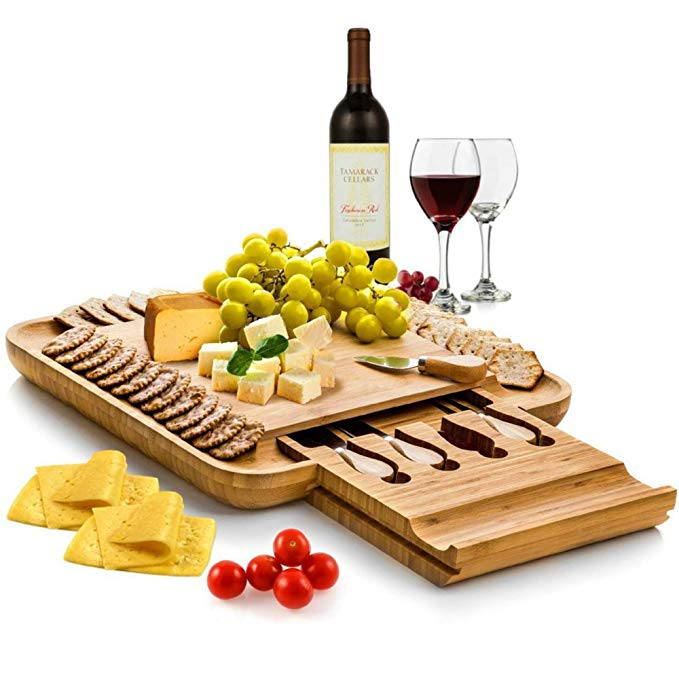Assiette De Fromages? Excuse me? Roquefort, Chèvre, Emmental, Camembert? What? If these names sound completely foreign don’t worry, by the end of this article you’ll know all about selecting cheese at a fine restaurant.
Types of Cheese
The first step in understanding how to select cheese, is to know the different categories of cheese that are available. If you order a cheese plate from an upscale restaurant, you may be greeted by a Maître Fromager (“Cheese Master”) who will present to you an assortment of cheese for your selection. Typically cheese is selected in groups of 3, 5 or 9. Your Fromager will talk you through the available selection on his board, and slice you off a chunk of each one that choose.
When presented with a cheese board in this manner it’s very likely that the cheese will be grouped by type. Knowing the qualities of each type can help you understand what you’re about to enjoy, and make the selection process much easier.
Type Of Cheese By Texture
The hardness of a cheese defines it’s texture. Depending on how a cheese is manufactured, or how long it is aged, it’s hardness will be different. Some cheeses are not aged very long before they are ready to be eaten. These cheeses tend to retain more of their moisture, thus making them softer. Others are aged much longer, and become hardened through the aging process. Though all cheese is delicious when eaten on it’s own or with a side of crackers and bread, depending on the cheese texture you may use a cheese in the kitchen differently. Soft cheese contains a higher moisture content than other cheeses, and they can be good for melting or cooking with. The softer cheeses tend to pair well with a crisp white wine. The semi-hard cheese like Cheddar slices well, is popular on cheese plates, and tends to pair well with red wines. The hard cheeses are often used for grating, think Parmesan or Asiago.
- Fresh Cheese – Fresh cheese is soft and does not have a rind. It is very moist and pale in color. Examples include feta and goat cheese. Fresh cheese is a very young cheese, a few weeks to a couple of months old.
- Bloomy Rind Cheese – This is a fatty, rich cheese that has been treated with mold to ripen it from the rind to the inside. The rind can be edible and the cheese’s texture is semi-soft and creamy.
- Washed Rind Cheese – This texture gets its name from the fact that the rinds are rubbed with a solution of brine, wine, beer or brandy. This solution leads to a “stinky” cheese, like Muenster or Limburger.
- Semi-Soft Cheese – This cheese is nutty and earthy in flavor. Some examples include Raclette and Fontina.
- Semi-Hard Cheese – These cheeses are aged up to two years, and have their moisture reduced to about 40 or 50 percent. They slice well, are often found on cheese trays, and pair well with red wine. Gouda, Cheddar and Swiss are examples of semi-hard cheese.
- Hard Cheese – Hard cheese is aged for a long time and is perfect for grating. Example include Old Amsterdam, Parmesans and Romanos.
- Special Processes – Some cheese goes through a special process to give it extra unique features and texture. Blue-veined cheese fits into this category. Mold spores such as Penicillin are added to this cheese, which is responsible for it’s blue veins and has a quality that causes it to crumble well. Another example of a specially processed cheese is “pasta filata”, also known as “spun paste cheese”. To make this cheese the curds are put into a hot whey broth and stretched until it’s extra soft. The Mozzarella that you’d find in a Caprese Salad would be an example of pasta filata.
Types of Cheese by Milk Source
Everyone knows that cheese is made from milk (generally), and the cheese flavor will be heavily dependent on the type of animal that the milk comes from. The most common animals used to make milk for cheese are goats, sheep, and of course cows. Goat’s milk is light, fresh and tangy, while sheep’s milk is rich and fatty.
“Terroir” is just as important as the type of animal when it comes to a milk source. Terroir refers to the conditions of the environment that the animal lives in and eats in. It encompasses everything from a region, including the local microclimate, rainfall, the season, what the animal eats (hay, berries, grass, etc), and altitude. All of these factors affect an animal’s diet, therefore they effect the flavor of the milk that animal can produce. Of course country of origin becomes important when you realize the importance that environment has in shaping the flavor of cheese. Cheese flavor can vary greatly from town to town, let alone country to country!
Specific Cheeses by Type
So how does all this information help you determine what kind of cheese to choose from your Maître Fromager? There is a lot of crossover as cheese types progress from texture to texture, but to assist in your decision making, here is a list of some of the common cheeses categorized by type.
- Fresh Cheese
- Feta – Brined, salty and tangy, typically made from sheep or goat’s milk.
- Cotija – Dry, salty and crumbly. Similar to Feta.
- Oaxaca – Mild and rubbery texture, it’s in the pasta filata family and similar to Mozzarella.
- Farmer’s Cheese – Made from sour milk and has a dry, crumbly nature.
- Goat Cheese – Tangy flavor and has a consistency that is easily spreadable.
- Bloomy Rind Cheese
- Brie – Soft cheese made with cow’s milk, you can eat the rind. It’s flavor depends largely on the environment it was made in.
- Camembert – Similar to Brie, it’s a soft cheese made from cow’s milk that spreads well. It has a milky, sweet taste.
- Coulommiers – A nuttier flavored cousin to Brie, it shares similar characteristics.
- Brillat Savarin – A high-fat, triple cream cheese, it has a buttery taste with hints of nuts, mushrooms and truffles.
- Washed Rind Cheese
- Taleggio – Brie’s smellier cousin, it’s taste is milder than it’s nose. It has a delicious fruity tang. The brine leaves a sugary crunch on the exterior.
- Limburger – Another stinky cheese, it’s flavor is buttery, sweet and sharp.
- Winnimere – Washed with locally brewed beer, this cheese’s flavor has a smoky pungent taste reminiscent of bacon, spruce and sweet cream.
- Gruyère – This hard, yellow cheese is named after a Swiss town. Complex in flavor, it starts off fruity and progresses to earthy and nutty.
- Semi-Soft
- Havarti – The cheese that everyone likes, it is buttery and nutty and utterly approachable.
- Morbier – Easily recognizable by it’s distinct line of ash running through the middle. It has a rich, creamy flavor with a bit of a bitter aftertaste.
- Tomme de Savoie -A mild, low-fat cheese, it’s made year round and has a tangy, citrusy taste with hints of mushroom and cave odours.
- Munster – A sweet and nutty cheese with high fat content, it’s sometimes flavored with cumin and tastes good with a cold beer.
- Semi-Hard
- Cheddar – The most widely eaten cheese in the world, it has a crumbly texture and a rich, sharp flavor.
- Gouda – Another popular cheese, it pairs well with beer, wine or whiskey depending on it’s age, as it’s flavor changes depending on it’s age, but expect a bit of a creamy, nutty taste.
- Comte – Comte is considered one of the finest cheeses in the world. It is complex with many flavors throughout, and has an overall sweet, brown-butter flavor with roasted-nut aromas.
- Manchego – There are a variety of different flavors for Manchego based on it’s aging process, young Manchego is fruity while more mature Manchego is nutty with hints of caramel.
- Hard
- Parmigiano – It’s hard texture makes it great for grating, the real stuff has a fruity, nutty flavor.
- Asiago D’allevo – Another cheese that varies in flavor as it ages, when it’s young it has a mild flavor, but as it gets older it gets intense and spicy.
- Grana Padano – The milder sibling of Parmigiano, it is less complex and often used on pasta and salads.
- Gorgonzola – Known as “Italian Blue Cheese” – it is veiny like a blue cheese, which gives it a little bite. Use it to top off your salad or pizza.
- Special Process
- Cabrales – A Spanish blue cheese that cures from the outside in, it has a strong aroma with a sharp, acidic taste. Pairs well with red wine and salami.
- Danablu (Danish Blue) – Creamy and crumbly, it has a sharp salty taste. It’s moist with an edible rind.
- Stilton – Not for the faint of heart, this is a strong blue cheese. Pairs well with port wine, walnuts and bread.
- Roquefort – Veiny with a tangy flavor, it’s one of the more popular blue cheeses.
Principles of Cheese Tasting
In general when tasting cheese you want to move from simple to more complex. This way you’re not overwhelming your palate with a complex flavor before you taste something more mild. You don’t want to miss out on any of the nuances of those mild flavors. Another good rule of thumb is to move from younger cheese to more aged cheese, and from lighter cheese to heavier cheese.
If you want to pair wines with cheese, a good resource for knowing which wines go with which cheese is Max McCalman’s Wine and Cheese Pairing Swatchbook. Max McCalman is a world reknowned cheese expert, and has put together this easy reference guide to help you with your wine and cheese pairings.
Should you choose to host a cheese tasting yourself, try selecting 3, 5 or 9 cheeses, and try to follow the guidelines from above. You’ll want to grab an assortment of crackers and bread so that your guests can use them as a palate cleanser. You may be tempted to spread the cheese on a cracker or some bread, but it’s better to taste the cheese on it’s own and use the cracker and bread to help neutralize the taste in your mouth, thus preparing you for the next flavor. It’s also nice to add some fruit (berries and/or grapes are nice), and some meats (salami, prosciutto, and summer sausage are favorites) to the cheese board for variety. Have a little spicy mustard on the side for meats, and some honey to dip the bread in and you’ll be ready to host your own cheese tasting.
Check out these accessories to help with organizing your own cheese plates:

Now that you’ve learned all about varieties of cheese and how to tell the differences, you can order in confidence at your next fine dining experience.








Comments by The Dapper Savage